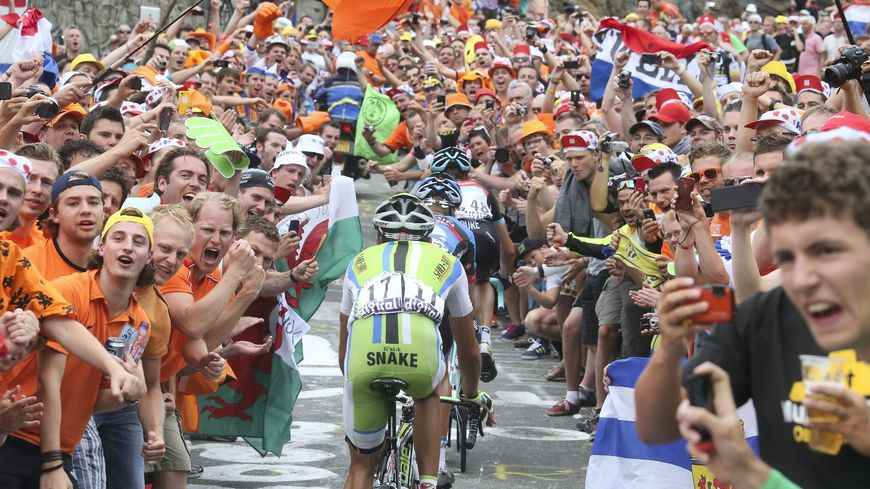Alpe d’Huez and the Tour de France is a 70 year old story. The big loop stopped for the first time in the resort of Oisans in 1952. Beginning of a sometimes tumultuous, excessive but always passionate relationship.
The most famous climb in the world
– Francis Nicolas maxppp
To understand what Alpe d’Huez represents, you have to come on any day in summer to the famous road and its 21 laces. Cyclists are everywhere there, so much so that the resort of Oisans has long been mainly known for cycling, much more than skiing ! A story born in 1952 with the first arrival of the Tour and already a first legendary winner Fausto Coppi. Year after year, crossing the big loop after crossing the big loop, the ascent has grown to become today a world reference, as confirmed by the Grenoble commentator of the Tour on France Television, Alexander Pasteur : “This is indeed the most famous climb. I was in Denmark a few weeks ago to prepare for the big start, and the Danes when we talk about the Tour de France they have only one word in their mouths -Alpe d’Huez!!!- a little like the Dutch. 1952 is the first arrival at altitude in the history of the Tour, with in addition a mythical winner Fausto Coppi. The arrival at Alpe d’Huez in 1952 is finally the first live TV images, so there is all this history that gives Alpe d’Huez a sacred side.”
“We had to intervene in the cemetery, tell them no, it’s not a place to party!” – Jean Yves Noyrey, mayor of Alpe d’Huez about the famous turn of the Dutch.

– Pierre Teyssot
The spectators have an important part in the myth of Alpe d’Huez, which is transformed into a real open air stadium at each passage of the Tour. A colourful, noisy and excessive crowd rushes several days before, and is patient, not always drinking in moderation, especially in the famous turn number 7, that of the Dutch, high place of the party. But sometimes the climb of Alpe d’Huez overflows, Mayor Jean-Yves Noyrey knows something about it:We had to intervene in the cemetery, tell them that no, it’s not a place to party!”
When the Tour last came, in 2018 the Italian champion Vincenzo Nibali fell and had to retire because of a fractured vertebra. The party was not there, still regrets Jean-Yves Noyrey today. “The last stage which came to the Alpe was for us a stage which did not go well. Firstly because there was a big, big pressure at the level of the gendarmerie to pay attention to everything. You can be completely safe, but more discreet. The climb must remain a nice, jovial climb.“
“I can’t imagine a Tour de France without Alpe d’Huez– Christian Prudhomme, director of the Tour de France

– Pierrick Delobelle
four years later the Grande Boucle therefore returns to the climb of Oisans, with safety still at the center of attention. A month before the event, the boss of the tour urges spectators to respect the race and the riders: “If I could tell the people who are coming that they must above all come without smoke bombs, it would be good if they listened to me. Smoke bombs never helped on the route of the Tour de France. You smoke out champions who are already struggling to breathe from the exertion. They no longer see anything. For the Alpe to remain the Alpe, it has to remain the party.”
The excesses, and the three years of absence, have given rise to fear, and if the myth was threatened? What if the Tour didn’t take place in Alpe d’Huez? Christian Prudhomme’s answer is unequivocal: “Je can’t imagine a Tour de France without Alpe d’Huez. When I say that I can’t imagine a Tour without the Alpe, or without the Ventoux, that doesn’t mean that they are on the course every year, but simply that we go there regularly. Alpe d’Huez, we tell you about it at the end of the world. When we talk to you about the Tour de France, we talk about Alpe d’Huez, we talk about Ventoux, we talk about Tourmalet, Galibier. We have to move forward with new things, of course, but among the monuments we want to protect, there is obviously Alpe d’Huez.”
A monument which will therefore be on the program of the 12th stage of the Tour de France, next July 14.
